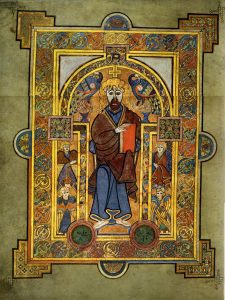After today’s class, there was one quote that we were reviewing from My Name is Red which truly stood out to me. This quote was, “Painting is the silence of thought and the music of sight.” I found this to be an incredibly important quote because it truly gets at the essence of the issue of this book. Is it an illuminators job to just blindly produce images that are accepted by society, or is it the artists job to represent and express their emotions and use these emotions to depict the world they see around them? Pamuk writes an entire novel of the transition from an Eastern world to a Western world, and how art and culture are developed as a result of this. The quote above highlights the same transition from creating art that is thought to be appropriate to the public to creating art that shows true artistic expression. I also find that he calls it “the music of sight” because yes these artists are producing what they see, but the “music” comes from their idealization of reality. This use of idealization was extremely common in Western 16th century art.
An example where I can see this transition is the first image we saw in class today that represented the love story that Pamuk’s novel is based on. The artist is rejecting common ideals and notions for what is acceptable in Eastern culture. It is completely new to have a man gazing upon a nude woman, who at the same time invites her in with her gaze. This is also seen when the Modernist artists beginning in the 19th century began developing what was acceptable in art with regards to nudity and gazing. Prior to this movement only nymphs and gods were depicted naked, but now they were allowing ordinary women to be naked, and they were accepting the viewers gaze at the same time. This can be seen in Edoard Manet’s Olympia (1856).
She was not a goddess or a nymph, but still was the sole focus of a painting and was completely nude. She also was staring directly at the viewer drawing their attention to her nude figure. So truly being an artist and painting is more than just the thought of the spectator and the thought of what is acceptable, but art is about the music in an artist’s soul.



